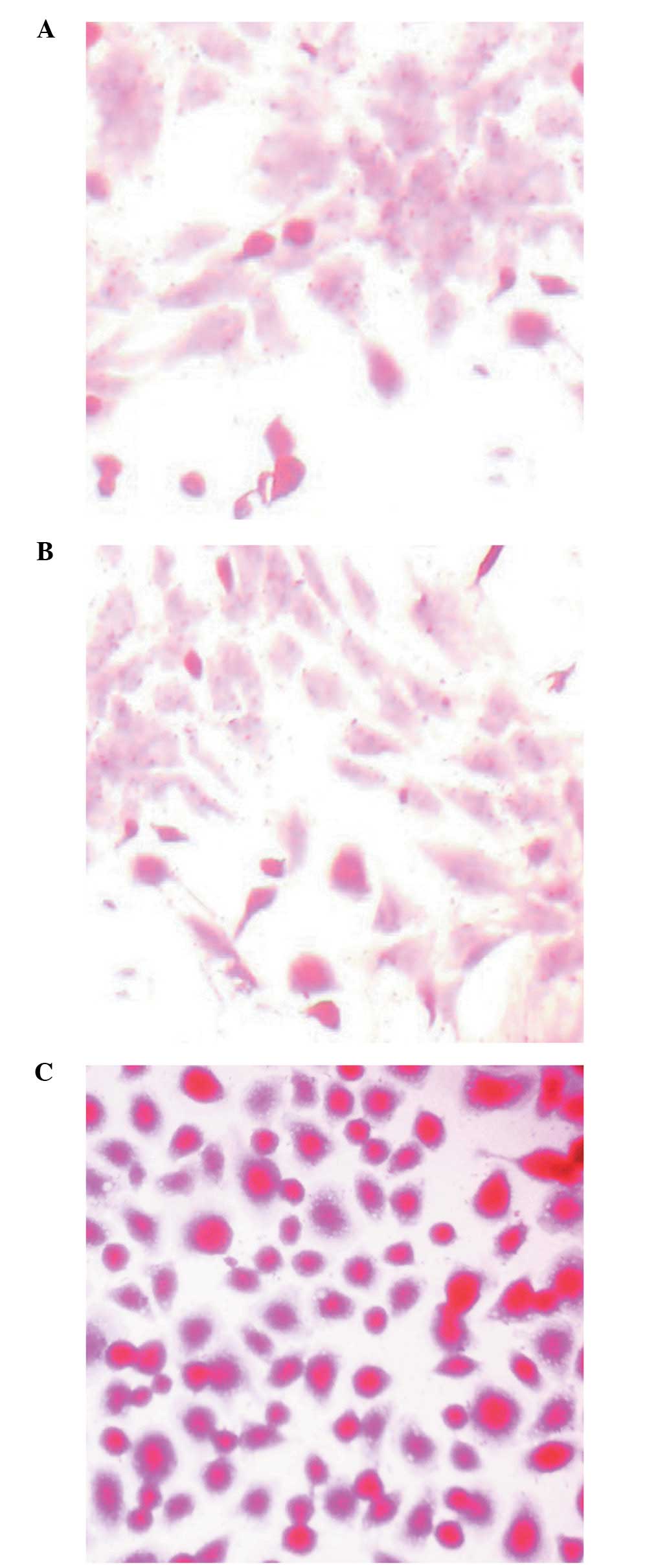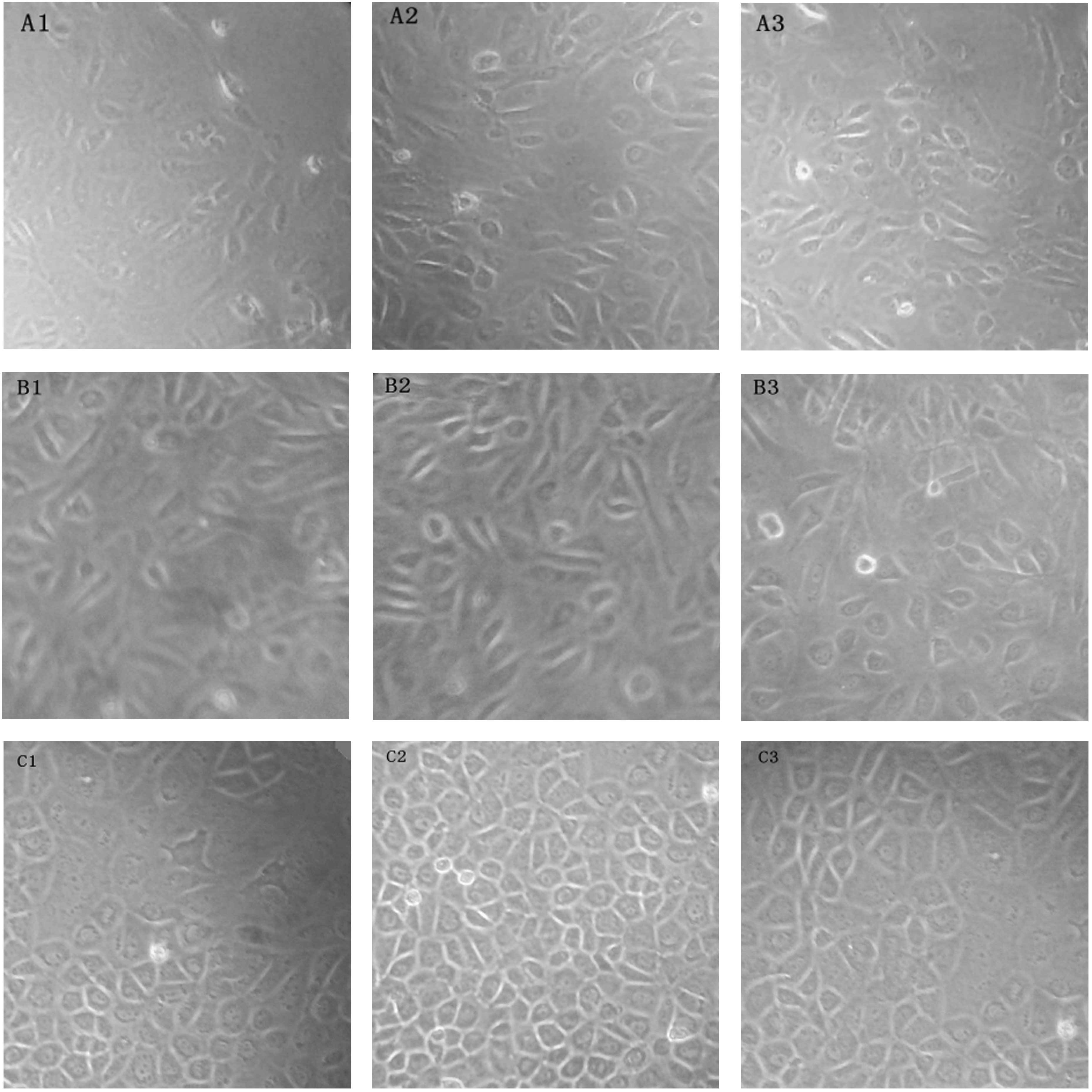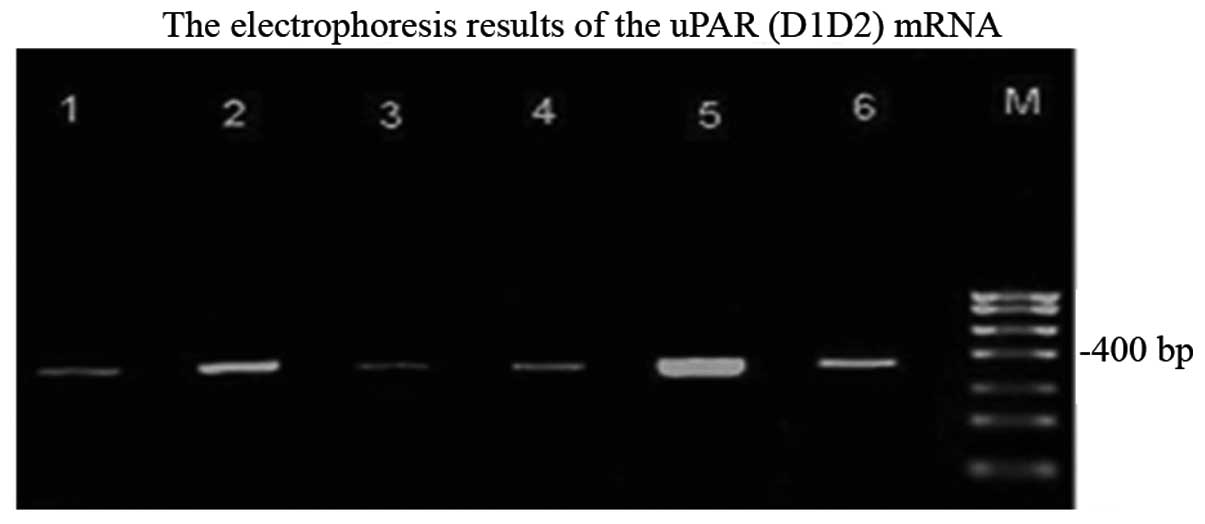Correlation between the overexpression of urokinase receptor isoform uPAR (D1D2) and hepatic cell malignant transformation
- Authors:
- Published online on: March 4, 2014 https://doi.org/10.3892/mmr.2014.2006
- Pages: 1689-1696
Metrics: Total
Views: 0 (Spandidos Publications: | PMC Statistics: )
Total PDF Downloads: 0 (Spandidos Publications: | PMC Statistics: )
Abstract
In order to provide an abundant source of specimen and to reveal the correlation between the overexpression of urokinase plasminogen activator receptor isoform uPAR (D1D2) and hepatic cell malignant transformation, the optimal liver cell culture method was selected from three cell culture methods to culture and separate out liver cells with a high density, high purity and high activity. The specimens were used to culture and assess the uPAR (D1D2) mRNA level in normal liver cells, liver cancer cells and para-carcinoma cells. In the present study, the correlation between the overexpression of uPAR (D1D2) and hepatic cell malignant transformation was discussed. When comparing the tissue block adherent method, liver cell grinding method and pancreatic enzyme digestion method, the liver tissue adherent method was found to be economical, simple and overall the optimal method for liver cell culture. This was used as a reference standard for cell culture. RT-PCR was used to determine isoform uPAR (D1D2) mRNA level in normal liver cells, para-carcinoma cells and liver cancer cells. The comparison of uPAR (D1D2) mRNA levels in normal liver cells, para-carcinoma cells and liver cancer cells, demonstrated that the brightness of the cells clearly increased in normal liver cells, para-carcinoma cells and liver cancer cells. The comparison of the cell grey values of three groups demonstrated a statistically significant difference (P<0.05). The liver tissue adherent method was able to produce liver cells with a high density, high purity and high activity, providing a sufficient source of specimen for our subsequent experiments. The electrophoresis results showed that: uPAR (D1D2) mRNA expression increased from normal liver cells to para-carcinoma cells to liver cancer cells, inferring that uPAR (D1D2) mRNA overexpression may be the result of changes in the conformation of the uPAR isoform. In addition, it is closely associated with abnormal cell signal transduction, which leads to clonal proliferation and abnormal differentiation of liver cells with malignant transformation in liver cells.












